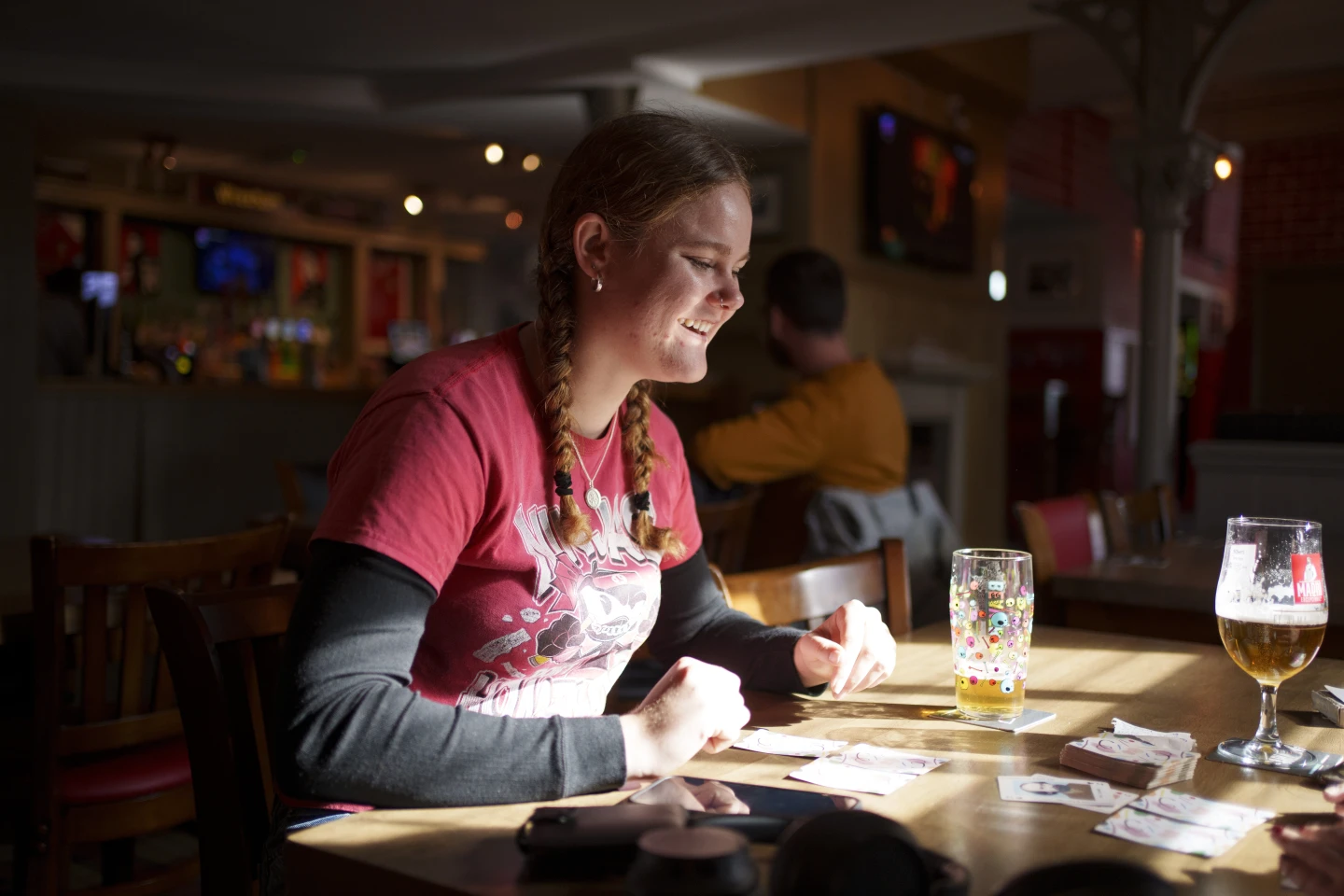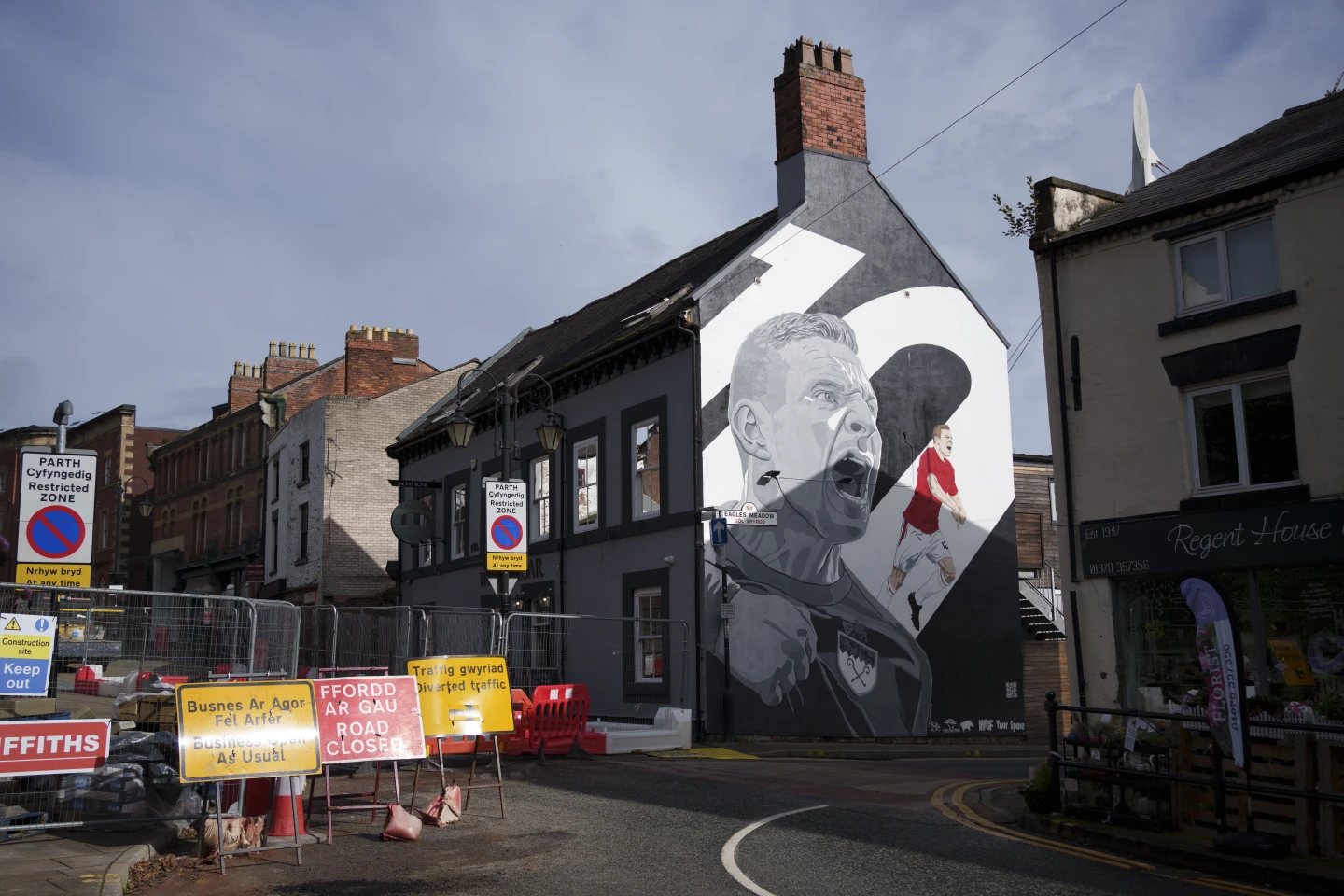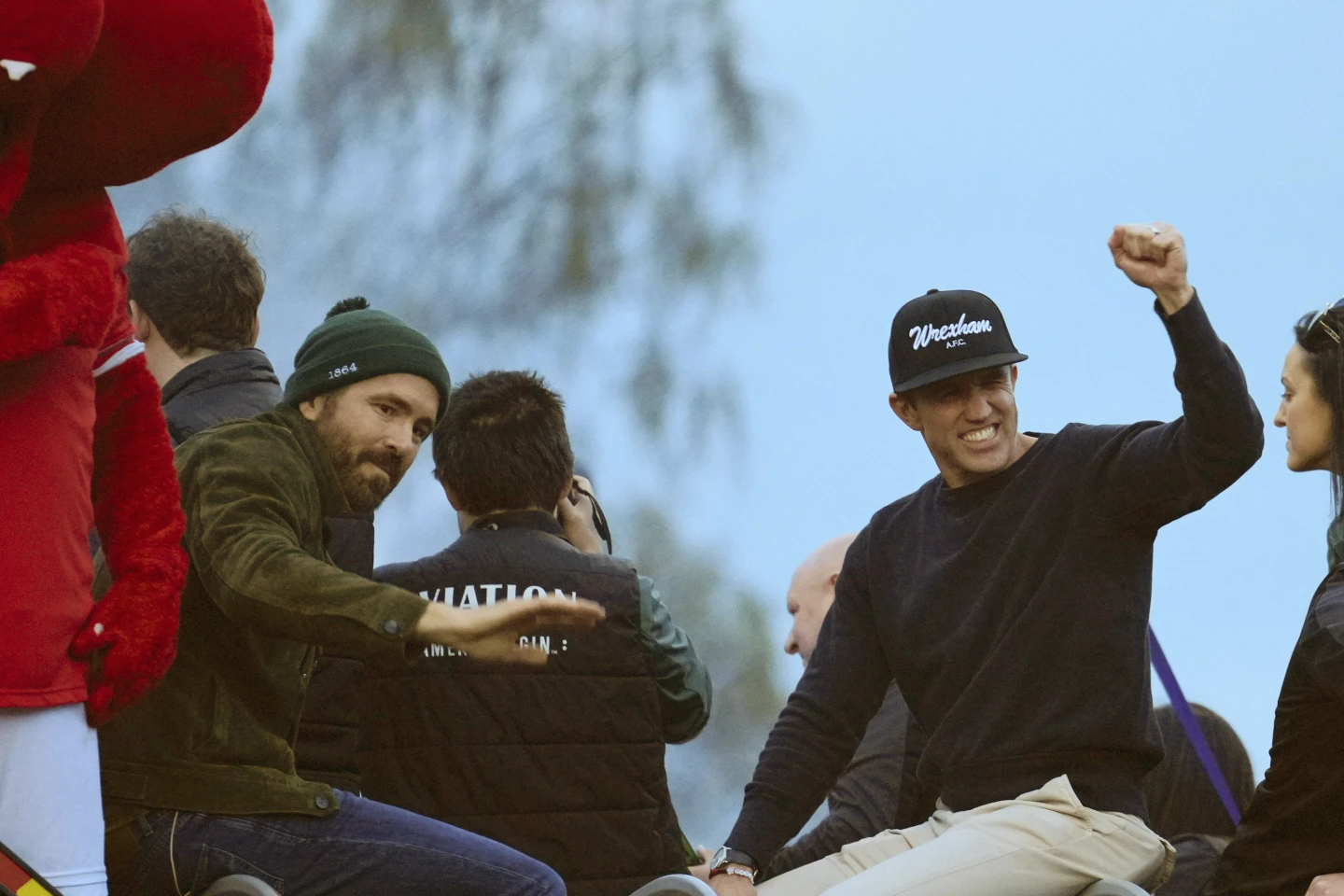Holding a pint of Guinness in one hand and scrolling through photos on his phone with the other, Nestor Aguedelo laughed and joked with his wife and sister-in-law in a corner of The Turf, a pub in north Wales that has quickly become one of Britain’s unexpected tourist spots.
“We came to Wrexham because of the TV documentary,” said Aguedelo, an engineer from Bogota, Colombia. “We got to know the city because of that, and we just wanted to see it for ourselves.”
This is a common story being shared in this former market, mining, and brewing town, which has seen a big change since Hollywood stars Ryan Reynolds and Rob McElhenney purchased its struggling soccer club for $2.5 million in 2021.
The club’s fame has grown even more since the two launched a documentary series — “Welcome to Wrexham” — that has made the team’s players and some of Wrexham’s residents recognizable around the world.
Now, tourists from various countries are visiting to learn more about this often-overlooked Welsh city, which has an urban population of 45,000.
“When we think of Ryan Reynolds, we think of Wrexham,” said Linda Williams, 70, a visitor from Reynolds’ home country of Canada, as she walked through the city center during a three-week trip to Wales.

Tourism revenue in Wrexham reached about 180 million pounds ($235 million) in 2023, which is a 20% increase from the previous year and almost 50% more since 2018, according to Ian Bancroft, the chief executive of Wrexham County Borough Council.
“We know from our tourism stats that the classic tourist route is America-Windsor-Wrexham-home,” Bancroft explained, mentioning Windsor Castle, the royal fortress near London where Prince Harry married Meghan Markle in 2018.
As “the Rob and Ryan effect” — as some people are calling it — takes hold, the local economy has been improved by businesses investing in or moving to Wrexham.
American food company Kellogg’s recently announced it is building Europe’s largest cereal factory in Wrexham’s industrial estate, with a $100 million investment that will create at least 130 jobs as part of the relocation.
Boutique hotels are appearing throughout the city, while Hannah Thomas, a local property manager, mentioned that more Americans are buying flats in the area and renting them out on Airbnb to tourists who come to watch the soccer.
At the same time, Wrexham Lager, a brewery that sponsors the team and claims to be the only lager served on the Titanic’s ill-fated voyage in 1912, said it has gained so much attention from the TV series that it is expanding internationally.
“We’ve started to make more significant strides in the past 12 months by growing our Welsh retailer footprint, expanding across the U.K., launching into Scandinavia and Australia, and plan to go live in Canada and the U.S. in the coming months,” said James Wright, the company’s CEO.
With support from Reynolds and McElhenney, Wrexham is trying to become the U.K. City of Culture for 2029. It only became a city in 2022.

The purchase of the soccer club and the TV series have “acted as a catalyst to supercharge the change in Wrexham,” Bancroft said in an interview at the council’s offices. “Wrexham’s growth would be happening, but it might only be 1/50th of what it is now.”
Wrexham is the fourth-largest city in Wales by population and is close to major cities in northwest England, like Liverpool and Manchester. It was built on heavy industry, agriculture, and mining, but has not been as significant as the main urban area of north Wales in recent years.
The city center looks tired and has some empty, boarded-up shops. People still remember the race riots in a Wrexham neighborhood that made national news in 2003. Now, however, there is hope and ambition.
The first stop for many international visitors is usually Wrexham’s soccer ground, the Racecourse, which is the oldest soccer stadium still in use for international matches. Nearby is The Turf, a popular spot featured in the documentary series.
Janice Hopp, a 72-year-old retired speech-language therapist from Terre Haute, Indiana, had never traveled outside the United States until she came to Wrexham with her son, Casey, after being enchanted by the TV series.
Her first stop? The Turf.
“This is what she wanted to be a part of — to see The Turf, to see the club, to get a peek inside (the stadium),” Casey said after having a drink inside the pub. “We built a whole nine-day trip to the U.K. around it and it’s been glorious.”

The pub’s manager, Wayne Jones, has become a celebrity himself thanks to his regular appearances in “Welcome to Wrexham,” with actors Will Ferrell and Paul Rudd among those who have visited the pub.
Jones even let Prince William behind the bar to pour a pint.
“The Turf was very similar to Wrexham as a whole — the town was struggling, businesses in it were struggling and we’ve landed very lucky,” Jones said about what he calls his “little boozer.”
“Every day, and most Wrexham fans will agree with this, we just wake up and pinch ourselves because we’ve hit the jackpot, haven’t we?”
The soccer team certainly has: Wrexham has just achieved back-to-back promotions to move up to the third tier, where it is currently in second place two months into the new season. Reynolds and McElhenney’s dream is to reach the profitable Premier League.
In March, a Wrexham director stated that the team’s value was 9 million pounds ($11.8 million) — more than four times the original purchase price — and Wrexham has moved up one division since then.
When taking over the club, Reynolds and McElhenney also promised to make a “positive difference to the wider community in Wrexham,” and so far they’ve kept that promise.
Once Wrexham finishes redeveloping its once-impressive Kop stand, which is set for 2026, there’s a commitment for the Racecourse to host qualifying matches for international tournaments for Wales’ men’s national team. That year, a new Football Museum for Wales is expected to open near the stadium.
